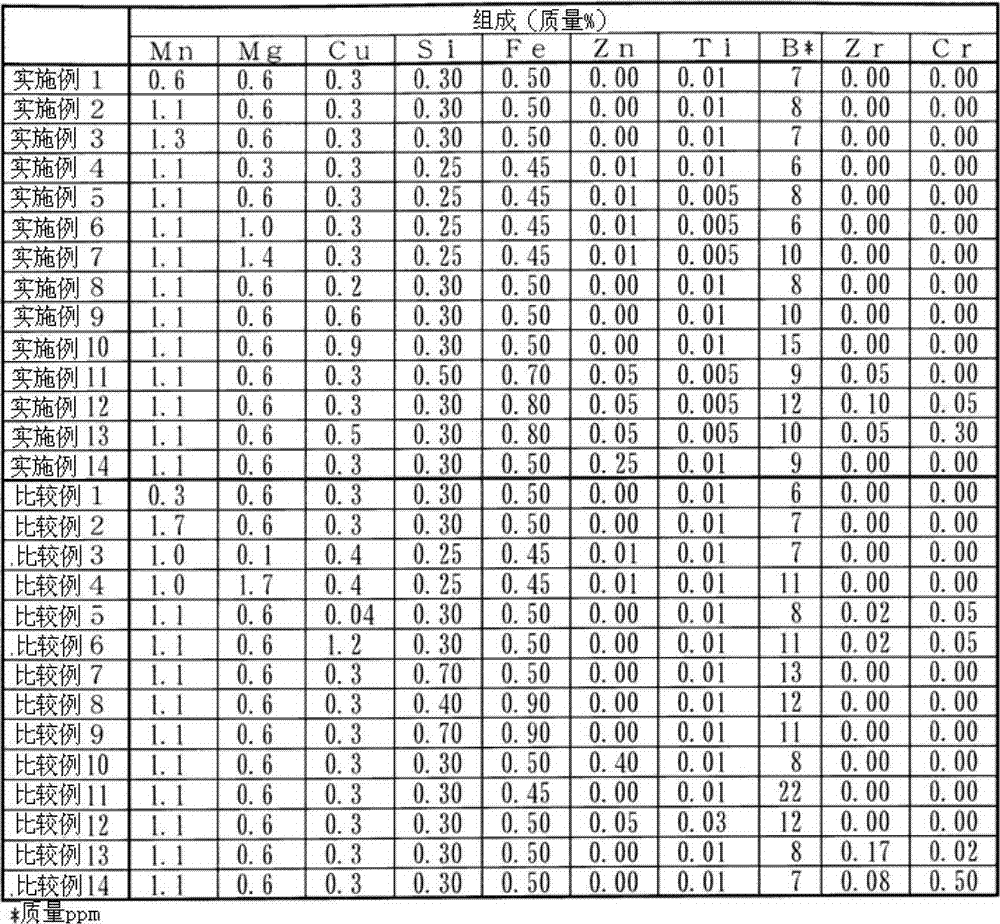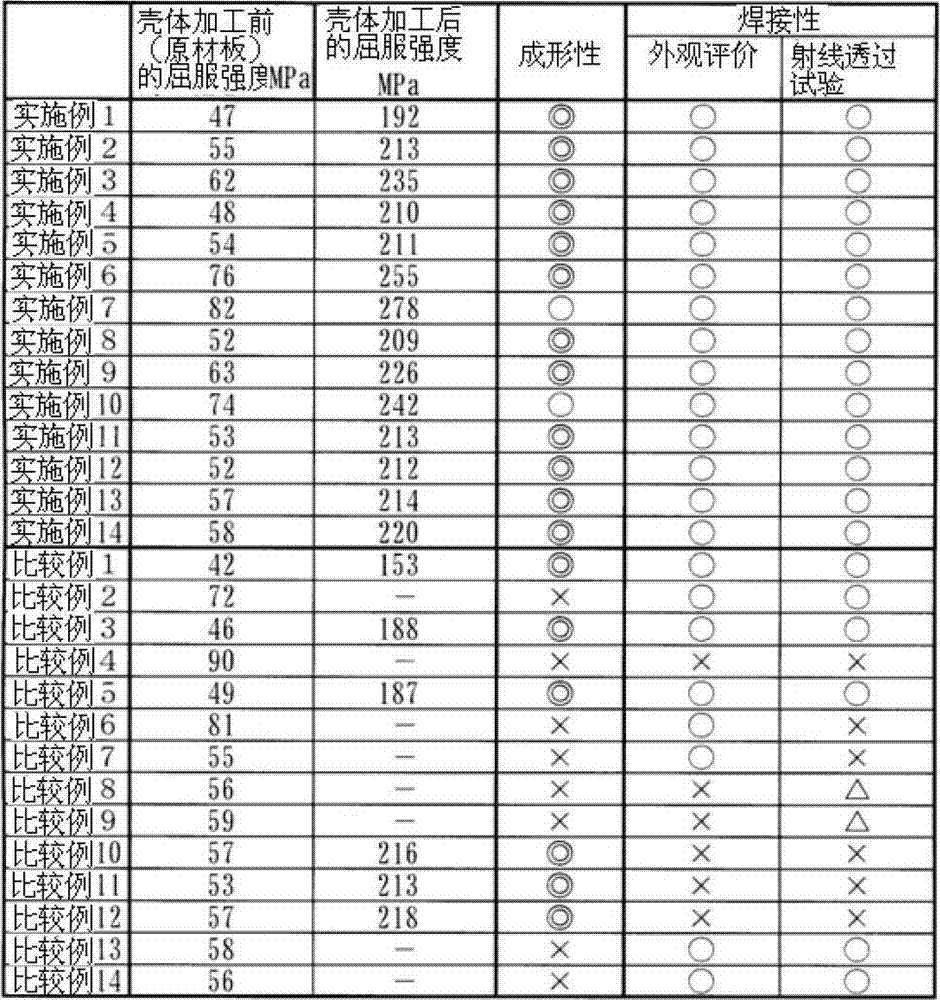Aluminum alloy plate for battery case and battery case
A technology of battery casing and aluminum alloy plate, which is applied in the direction of battery cover/end cover, battery pack components, battery box/jacket, etc., can solve the problems of reduced formability, prone to cracks, high yield strength, etc. Excellent weldability, secure penetration depth, and the effect of sufficient penetration depth
- Summary
- Abstract
- Description
- Claims
- Application Information
AI Technical Summary
Problems solved by technology
Method used
Image
Examples
Embodiment 1
[0056] Hereinafter, examples in which the effects of the present invention were confirmed are compared with comparative examples in which the requirements of the present invention are not satisfied, and will be specifically described.
[0057] 〔Production of test materials〕
[0058] Aluminum alloys having the compositions shown in Table 1 were melted and cast to form ingots, and after end milling the ingots, homogenization heat treatment was performed at 550° C. for 4 hours. The homogenized ingot was hot-rolled and then cold-rolled to obtain an aluminum alloy plate with a plate thickness of 1.0 mm. The cold-rolled rolled sheet was heated to 370° C., and batch-type annealed at this temperature for 4 hours was used as a sheet material (O material) for characteristic evaluation.
[0059] [Table 1]
[0060]
[0061] Using the evaluation sheets of Examples 1 to 14 and Comparative Examples 1 to 14, yield strength measurement, formability test, and weldability test (welding appe...
Embodiment 2
[0080] The aluminum alloy of Example 2 in Table 1 was melted and cast to form an ingot, and after face milling the ingot, a homogenization heat treatment was performed at 550° C. for 4 hours. The homogenized ingot was subjected to hot rolling and cold rolling, and after intermediate annealing held at 500° C. for 60 seconds, cold rolling was performed at 30% (Comparative Example 15) or 50% (Comparative Example 16). An aluminum alloy plate with a plate thickness of 1.0 mm was used as a plate material (H material) for property evaluation. Using the evaluation plates of Comparative Examples 15 and 16, the same evaluation test as [Example 1] was performed. The results are shown in Table 3.
[0081] 【table 3】
[0082]
[0083] As shown in Table 3, in Examples 15 and 16, the yield strength of the evaluation plate (H material) was high and the formability was poor.
Embodiment 3
[0085] From the evaluation plate (O material) of Example 2 of Table 1, cut out the test piece of 30mm * 100mm size, use the YAG laser of pulse sending, maximum peak output power 4.5kW, frequency 10Hz, the energy of every 1 pulse ( Radial energy) was 25 J / p, and a weldability test by pulsed laser welding (surfacing welding same as the weldability test of [Example 1]) was performed.
[0086]As a result, the weld penetration depth was 0.28 mm on average, which was significantly insufficient compared with 0.4 to 0.5 mm in [Example 1].
PUM
| Property | Measurement | Unit |
|---|---|---|
| yield strength | aaaaa | aaaaa |
| yield strength | aaaaa | aaaaa |
| yield strength | aaaaa | aaaaa |
Abstract
Description
Claims
Application Information
 Login to View More
Login to View More - R&D
- Intellectual Property
- Life Sciences
- Materials
- Tech Scout
- Unparalleled Data Quality
- Higher Quality Content
- 60% Fewer Hallucinations
Browse by: Latest US Patents, China's latest patents, Technical Efficacy Thesaurus, Application Domain, Technology Topic, Popular Technical Reports.
© 2025 PatSnap. All rights reserved.Legal|Privacy policy|Modern Slavery Act Transparency Statement|Sitemap|About US| Contact US: help@patsnap.com



